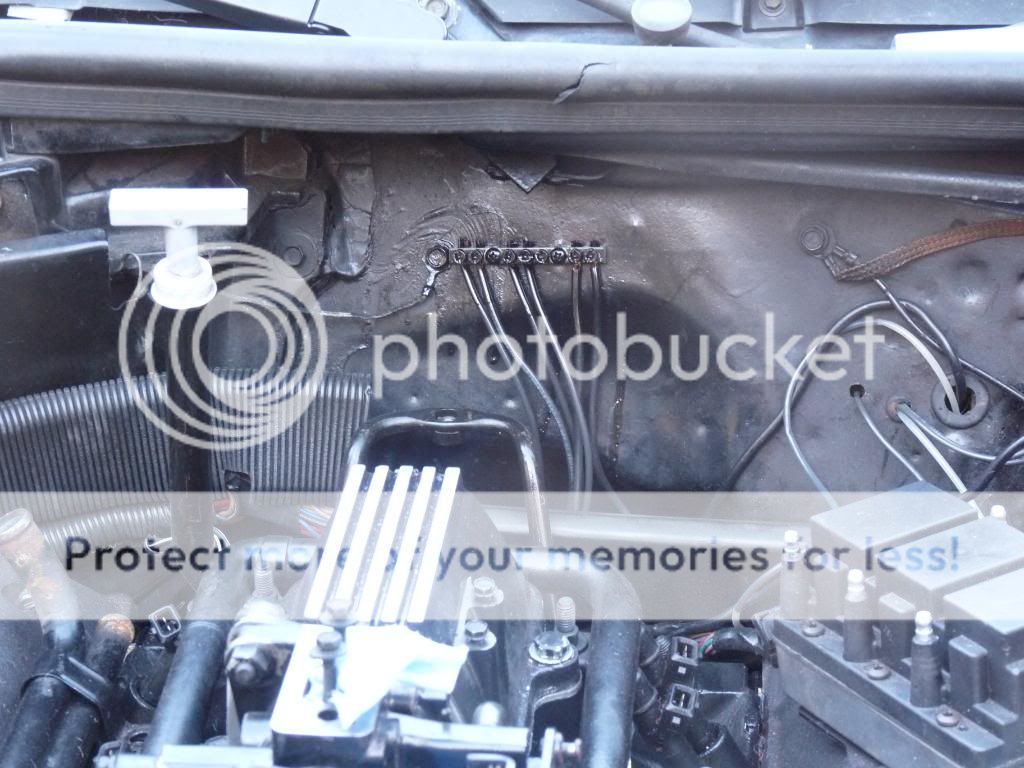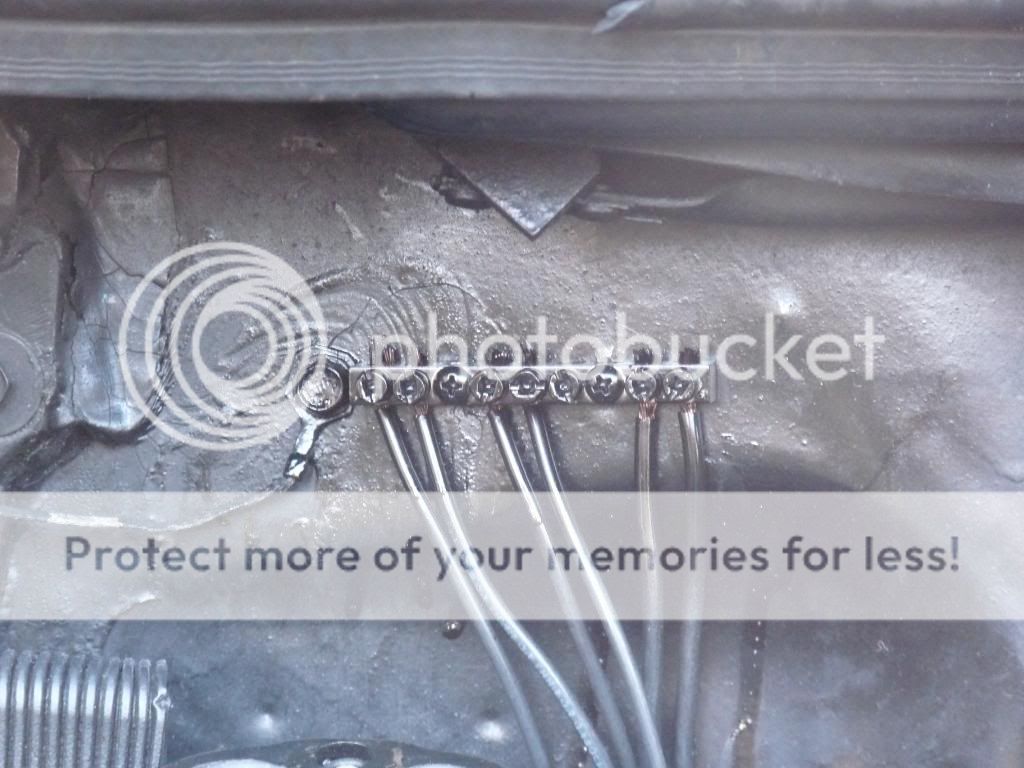Engine Grounds Revisited
Engine Grounds 101
Consider how the factory grounds were designed. There were seven ground wires attached to four ring terminals which broke out of the harness with short pigtails, then attached to two of the bolts in the rear passenger side of the engine. They used the transmission bolts to secure them.
The brass ring terminals used were the type with floating shakeproof serrations, and they also tinned the copper wire (some were fully soldered). NOTE: It was common practice to "tin" the bare copper factory wire prior to staking the terminal, as the oxygen in the air slowly tarnishes and corrodes bare copper, causing resistance in the connection. Tin plating the exposed wire slows the process considerably. Today, oxygen-free copper conductors are improved and less prone to oxidation although eventually, mother nature gets her way.
The engine block is an ideal common ground being a mass of steel and iron. There is a short 10 gage pigtail from the battery negative to the inner fender well, completing the body ground. The 4 gage negative battery cable attaches to the engine block, through the turbo support bracket - revealing the biggest fault in the factory setup.
The factory engineers didn't consider the vibration the turbos exhibit, which eventually shakes the turbo bracket bolt loose ("bad ground"). Another anomaly the factory engineers didn't pick up on is the result of out-of-the-ordinary torque the turbo engine made, causing the transmission bolts with the soft brass ring terminals, serving as lock washers, to slowly loosen (steel lock washers are much less prone to loosening under excessive torque). Once the bolts loosen, it loses it's ground, and since electronics grounds share terminals, a "sensor loop" condition exists, where the sensors malfunction by sharing common negative connections without the necessary grounding. Try it yourself; disconnect one of the ring terminals and remove it from the bolt...multiple fault codes suddenly appear.
But, giving the engineers credit where credit is due, they also didn't realize that our cars would become "cult" cars, and would be hitting the 25 year mark, racing all the way, with many more years to come. We'll cut 'em some slack there.
So, the fix is to relocate the grounds to an area that isn't directly affected by engine flex. Use a larger flexible conductor and attach it to its own bolt (the rear intake bolt is sufficient as well). Add an additional connection from there to the body sheet metal and you have effectively improved the grounds. This separate ground stud now becomes "ground-zero" and can be used for your battery negative attachment as well, especially if you have located the battery in the rear of the car.
Years ago, I had identified a potential ground problem in the OEM engine harness. There are several internal splices within the harness that encompass the electronics grounds, and they all have the potential to fail.
Now for the shameless plug...The fix was incorporated into every harness Caspers builds: Each ground is run individually to its location, eliminating the internal splices. There are now fourteen individual electronics ground wires instead of the usual six, and they're much longer (built-in ground relocation).




